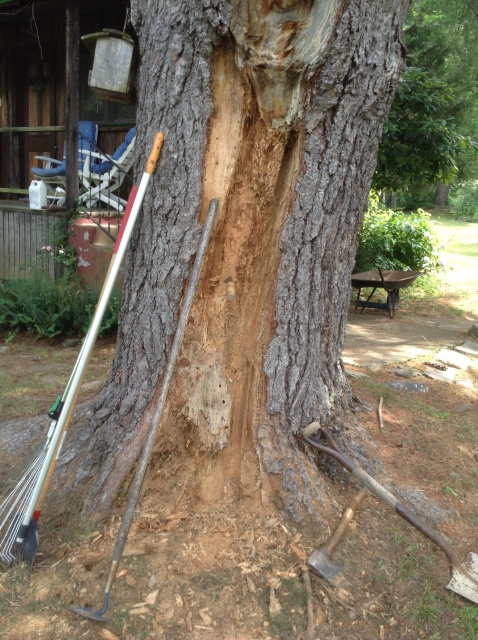QuestionQUESTION: IM ABOUT TO RESORT TO TREE SURGERY OF YORE....I HAVE A 60+ FOOT PINE TREE AFFLICTED WITH CARPENTER ANT WOOD PECKER DAMAGE ON ONE SIDE OF THE TREE ABOUT SIX FT UP FROM THE ROOTS AND 2 1/2 FT WIDE. ARE THERE ANY OTHER OPTIONS . i PLAN TO REMOVE THE LOOSE DECAY AND DRY WOOD DUST, DISINFECT WITH PETROLEUM OIL, COAT WITH HEATED ASPHALT, AND CEMENT.
THANKS
NAT
ANSWER: Well, carpenter ants are quite common in trees, generally older trees with hollow trunks and a significant amount of dead limbs and branches. The ant nests are located in rotted and decayed wood, usually not venturing into sound or solid wood areas.
A carpenter ant nest is not directly harmful to the tree and studues have shown that control is not essential for the tree's health. The ants are only using an existing soft, rotted or decayed wood to build their colony.
Some other factors, environmental conditions, disease or other insects were and are responsible for the decay and structural decay to the tree, this is not caused by the ants. However, once the decay occurs, this gives the ants an opportunity to build colony's inside the tree, entering through knots, cracks, other insect tunnels, etc.
Generally if carpenter ants are controlled, it is in an attempt to reduce any invasion into other structures nearby. There is not any control, even using pesticides that are permanent, and would need to be repeated likely every year.
Sealing the cavities is not recommended, and supported by many studies over the past decade, and not supported by ANSI A300 Treecare Best Management Practices. Sealing also will not prevent future colonies from coming back should you be successful in the first attempt.
The use of cement to fill cavities has been discouraged for the past couple of decades, although we used to do this, science has shown that long term it can actually cause rot and decay to occur faster as it actually traps water in the tree. The cement being solid will not flex with the tree, water will run down the back and between the cracks opened up as the tree flexes in the wind. Once in the tree, it can not easily dry with the cement reducing airflow.
Some ashpalts or petroleum products are actually phytotoxic, and will kill plant cells.
Also, generally cutting down trees with carpenter ants is usually not necessary.
Remember, something other than the ants caused the rot and decay, not sure what but that may well continue with or without the ants. Digging out the decayed area may well cause injury to any compartmentalism already taking place by the tree as a defense against the decay. If you can not find source of decline, rot and decay, it may well continue even if you were able to remove the ant colony.
---------- FOLLOW-UP ----------
 Tree boo boo
Tree boo boo
QUESTION: Thank you for your explanation. Finding a cause for the decay is problematic. Prior to your reply we attempted to remove the soft wood rot to a point of reaching hardwood but in some areas it continues deeper into the trunk and at this point we halted this effort. If I can't get an arborist to asses the situation (. This is a summer weekend residence in a deeply wooded area ). Should I at least wrap a mesh around the open cavity to prevent the woodpeckers from further probings and perhaps use some kind of less toxic product t to heal the damage
Nat
AnswerWell tree rot or decay is generally caused by a fungus, which enters the tree through an injury. The injury can be mechanical damage, storm damage, improper pruning to name a few common ones. The fungal growth essentially are microorganisms which consume portions of the wood. There are several types of rot, each slightly different, and each attacking certain species of trees.
You can wrap a mesh, it will cause no harm. If the tree is able to dry out the area which contains rot,it will profess more slowly. Depending upon how extensive it is now, the tree may structurally compromised, or may last for several more years.
There is nothing you will be able to do to successfully bring the tree back to full health and structural strength though.






